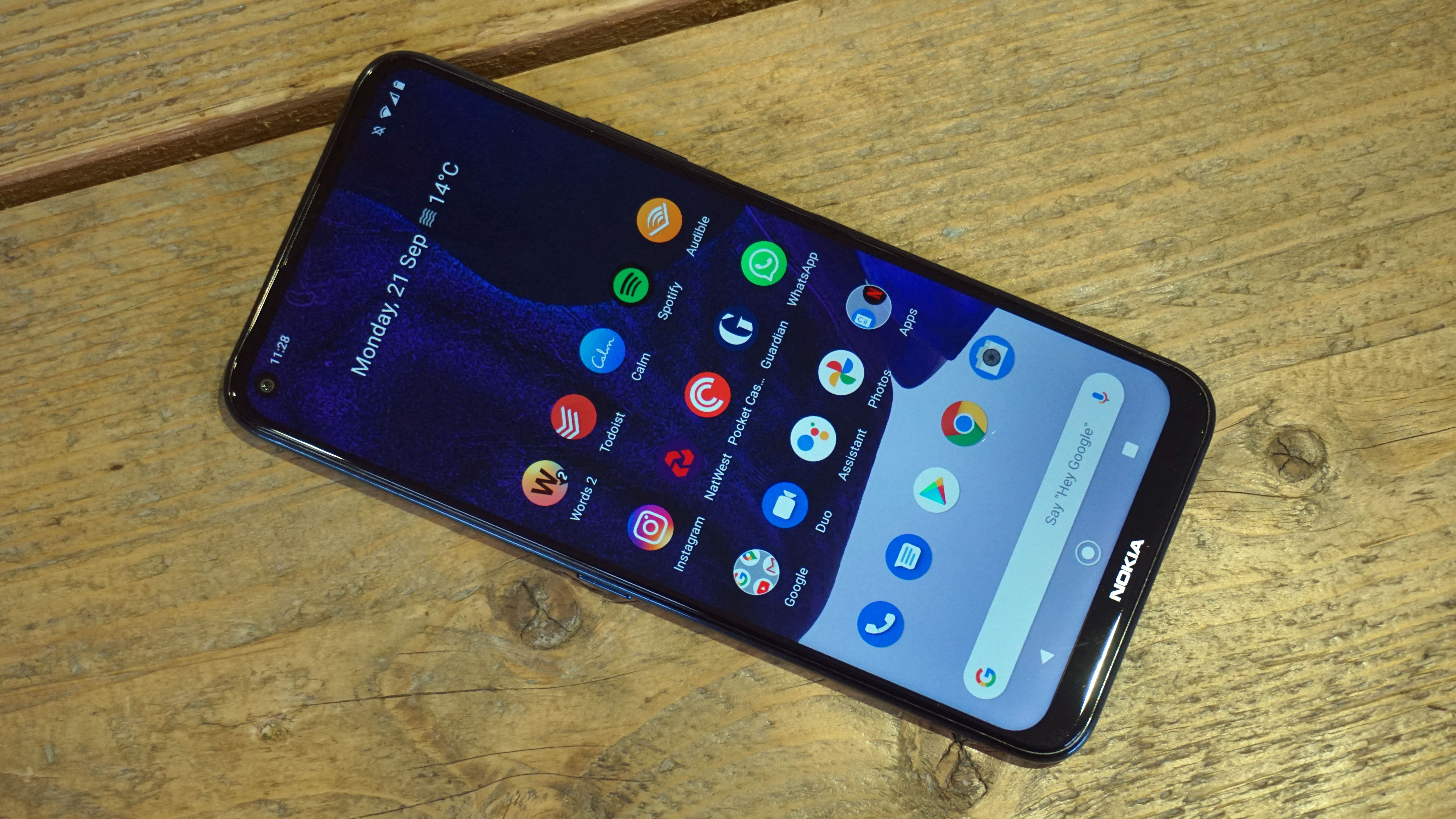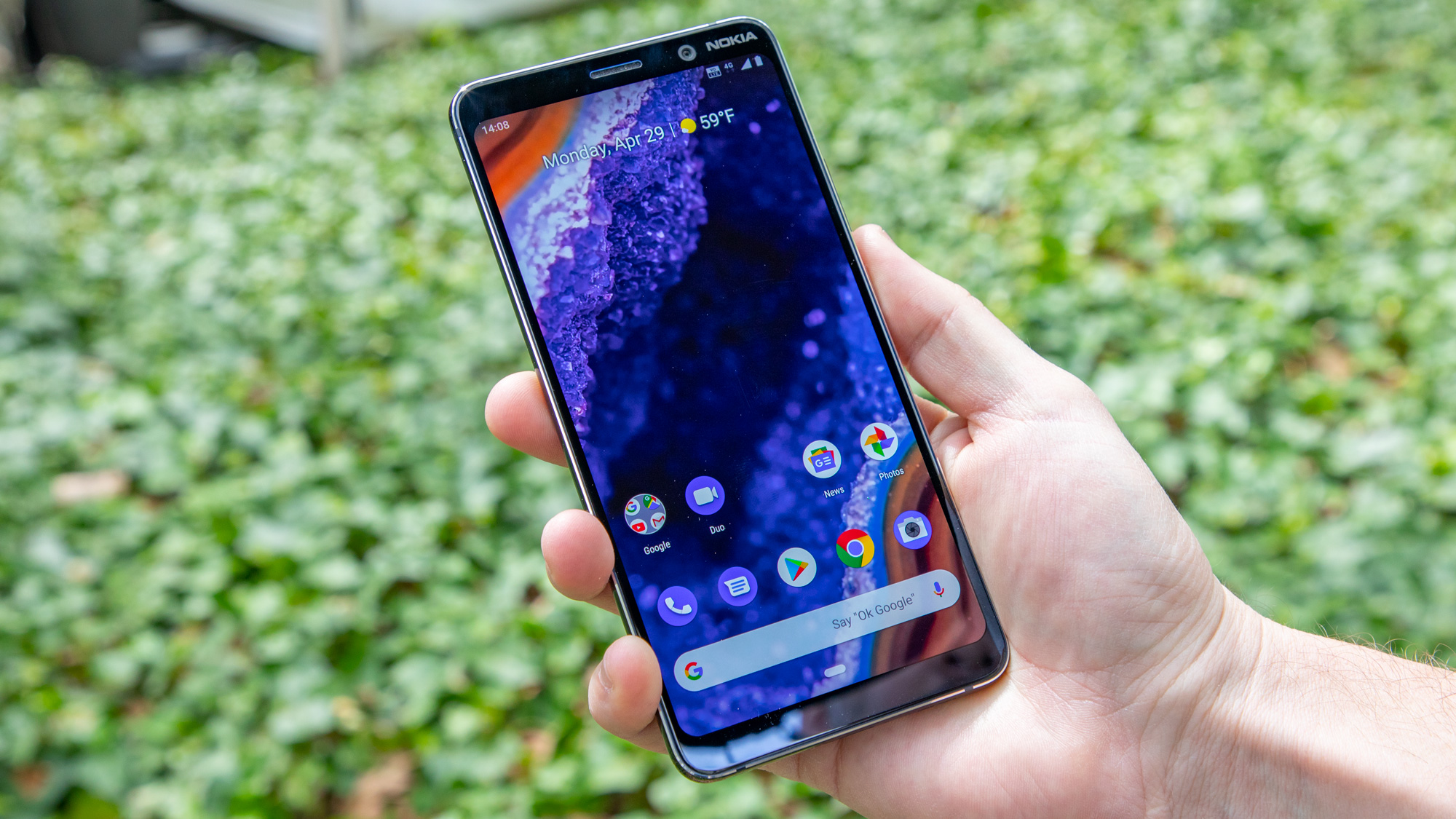What are Android One phones?
A refined interface and no bloatware - that's the goal.

Android One is the feature to look for if you want a phone with Android designed exactly as Google intended, but don’t want to shell out for a Google Pixel 5.
Android One is a version of the Android platform which uses a largely unmodified core interface, but with room to support a few little hardware extras. You could call it the best of both the so-called 'stock' and 'custom' approaches.
As well as a cohesive approach to user interface design, Android One promises better performance and battery life thanks to well-optimized software, no superfluous apps, and a longer period of software support too, with timely security updates.
There are a number of Android One phones on the market now, with Nokia and Motorola in particular being big supporters of the platform, with handsets such as the Nokia 9 PureView, Nokia 8.3, Motorola One Action, and many others.
- These are the best Android phones you can buy right now
How long has Android One been around?
Android One was introduced in 2014. It was originally designed as a way to increase the adoption of Android in developing countries where cheaper feature phones were still popular.
The first wave of Android One phones was aimed squarely at the Indian market and designed to run on low-end hardware. For years there wasn’t even a sniff of such a phone being destined for the US or the UK.
That has changed, though. Android One is no longer a platform for low-end phones. Android Go, introduced in 2017, takes up that role.
Get daily insight, inspiration and deals in your inbox
Sign up for breaking news, reviews, opinion, top tech deals, and more.
Android One is now available on all kinds of phones, from entry-level models with just enough RAM to handle full-fat Android, to some of the more powerful devices.
The key appeal is that it offers a clean look and feel, for people who like the software purity and timely updates of a Google Pixel, but either want to spend less, or prefer the hardware of another brand.
Which phones use Android One?
As of 2018, there are two main backers of Android One. HMD Global, using the Nokia name, is by far the most prominent, with a whole range of phones that suit a variety of budgets.
The Android One phones it has launched at the time of writing include the Nokia 9 PureView, Nokia 8.3, Nokia 5.3, Nokia 7.2, Nokia 6.2, and many others. The majority of the company's output runs Android One in fact.

The other fairly big supporter of Android One is Motorola, which has launched the Motorola One Action, Motorola One Vision, and Motorola One, all running the software.
Note that the 'One' in the name isn't a guarantee of Android One being included though. While that seemed to be the point when the range started, more recent models like the Motorola One Zoom don't run Android One.
Neither company were the first to release an Android One smartphone in Europe, though. The HTC U11 Life, a mid-range smartphone, came out towards the end of 2017, though the US got an Android One version of the Moto X4 marginally before then.
- The best Nokia phones money can buy
Three years of security updates, two of upgrades
Android One promises to be the most secure version of Android around, outside of the version on the Pixel at least. You get at least three years of security updates - which arrive in the month they’re released - which keeps you guarded against the latest software vulnerabilities.
This is an extremely important, but often ignored, factor when purchasing a smartphone, particularly in a time when personal data is extremely valuable and constantly under attack.
You can see when your current Android phone was last inoculated against threats in the About Phone section of Settings, under the Android Security Patch Level field. If it was a year ago, that’s very bad indeed.
Current Android One phones are also released with the promise of at least two years’ worth of operating system updates. These often introduce a whole swathe of new features, meaning you don’t have to rush out and buy new hardware to get a fresh smartphone experience.
Quicker updates
Android One makes it easier for software updates to be released in a timely manner. While not necessarily on day one of release like Pixel devices, Android One phones should, in theory, receive updates quicker than alternatives, thanks to using a stock Android interface that requires little customization.
Manufacturers still need to make sure new versions of Android One work with their own hardware and software, such as Motorola’s Active Display. However, there isn’t an entire interface worth of software to be tweaked and quality-assured.
What apps do Android One phones come with?
Android One offers clean-looking software, although the odd manufacturer tweak or two is allowed. The Nokia 7.1, for example, has a custom camera app complete with the enhanced Pro mode.

These extras are designed to be subtle and not interfere with the look and feel of the core interface. The rest of the app roster is made up of Google’s app suite.
All of these core apps are built using Google’s Material Design style, introduced in 2014 with Android 5.0. You get a consistent look across almost all the apps in an Android One phone. Of course, as with most Android handsets you're free to download additional apps from the Google Play Store.
Android One vs Pixel UI vs Android Go
Want to dig a little deeper? Android One is a mostly-unadulterated version of Android, but it’s not the only one Google produces.
There’s also Android Go, 'stock' Android and the Pixel UI seen in Pixel phones. All are native versions of Android, but there are slight differences between them.
Pixel UI tends to get a few exclusive features, some of which eventually hit other phones, but which Android One doesn't get initially. The version of Pixel UI included with Android 11 on the Pixel 5 for example has things like Hold for Me - a feature that lets Google Assistant wait on hold for you, and notify you when you're put through.
Of course, given that manufacturers can make small tweaks to Android One, you sometimes get features with that which aren't offered on Pixel UI equally, but those will vary from manufacturer to manufacturer and even device to device.
Other than the odd feature, Android One and 'stock' Android (as seen on Pixel phones) are very similar both in terms of functionality and design. The look of the interface varies slightly, but in both cases you're getting a basically pure Android experience.
The version intended for low-power phones, Android Go, ships with cut-down versions of core Google apps, including Gallery, Maps, Assistant and Files. These take up much less space and are designed to work better with limited system RAM.
Android Go is designed to work on devices with 2GB of RAM or less, which is far less than the 4GB - 16GB of RAM you'll find on most smartphones, so it's ideal for truly entry-level handsets.
If your budget stretches to an Android One phone though, we recommend the upgrade. If you want to try Go versions of Google suite apps, you can simply download them from the Play Store.
Andrew is a freelance journalist and has been writing and editing for some of the UK's top tech and lifestyle publications including TrustedReviews, Stuff, T3, TechRadar, Lifehacker and others.
